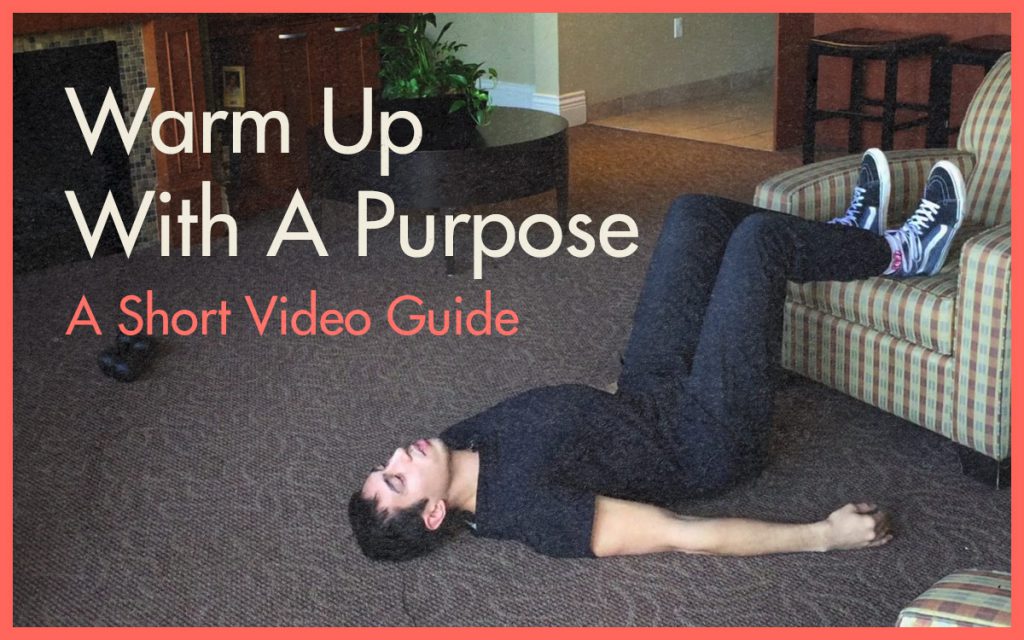
Women’s Warm Up Routine Before Lifting
Looking for a good warm-up before lifting weights? Should you stretch? What does a good warm-up routine include?
Do You Really Need To Warm Up Before Lifting?
Building muscle requires spending quite a bit of time under heavy weights. Exercises like squats, deadlifts, push-ups (or bench presses), hip thrusts, rows and chin-ups all allow you to lift quite heavy, and they all work quite a lot of muscles at once, making them good foundational exercises in a good muscle-building program.
But the reality is that everyone who starts lifting is setting sail from a different port. You will have your own unique strengths and weaknesses. You might be great at one of those lifts, but totally unable to do another. If you “train your weaknesses and compete with your strengths,” you can build substantial muscle while also shoring up your weaknesses.
That’s where warming up comes in. Warming up is good for helping you decrease your risk of injury and enhancing your performance through various mechanisms. It usually involves some sort of general aerobic component followed by some static stretching. While this warm-up can still be effective, this article will discuss how to make your warm-up way, way better through postural drills and pattern warm-ups.
While warming up is useful for getting your juices flowing, increasing body temperature, and getting your body ready for more intense work, the main purpose of warming up is to address your weaknesses and improve your lifting technique. That way, you’ll soon be doing all your heavier lifts with excellent technique. Once you can do that, whichever port you started at, the world will be your oyster.
Women’s Warm-Up Routine Video
The Structure & Principles of Warming Up Before Lifting
Imagine your workout as a good story. It needs a humble beginning, a climax, and some sort of grand resolution. One aspect that sets apart good stories and bad stories is how invested we become in the characters. The more we can relate with the characters and understand their motives, the more enjoyable the climax will be.
The climax of your workout depends on the quality of your warm-up. If you struggle to do a squat properly, it’s important to dedicate some of your warm-up time to addressing that issue. That will allow you to squat more weight through a larger range of motion during your workout, yielding more muscle growth by the end of your workout. Or, if you’ve had a previous injury, the warm-up allows you to strengthen that area so you’re not worried about it while you work out, leading to a more enjoyable training session.
Why Bother Warming Up?
A Warm-Up Prepares The Body For More Intense Work
This is why it’s called a warm-up! The increase in heat, blood flow and synovial fluid (joint lubrication) helps your joints move with less resistance, makes your muscles more pliable and gets the brain excited and ready to lift.
A Warm-Up Broadens Movement Capacity
“You’re only as strong as your weakest link.” Many weaknesses stem from a lack of mobility and stability resulting from limited movement patterns. Using exercises to balance out the pelvis and ribs, you can allow your body to move more effectively in each plane, thereby evening out the load placed on your muscles and joints.
A Warm-Up Makes Your Lifting Automatic
Doing repetitions of the skill you’re about to do with light weights helps to make the movement automatic so you can enter a flow state. Overthinking can lead to a stiffening of movement. Practice your technique in the warm-up, and go with instinct during your main, heavier sets.
Completing these objectives helps to decrease the chance of injury, improve your capacity to move better, lead to a more balanced body and will help you work out at a higher intensity. This allows you to build muscle and reach your goals.
Should You Stretch During A Warm-Up?
One of the most common forms of warming up is static stretching. Stretching is not bad for you. However, there have been many studies showing that it decreases your ability to contract your muscles forcefully. So if you love static stretching, avoid the long holds and make it more dynamic.
Before you stretch, though, it’s important to see what the position of your pelvis and ribs are, as this can have a significant impact on your mobility and flexibility.
A forward pelvis and flared rib cage can actually lead to a tightness in the hamstrings, lower back and shoulders. So just by doing a few repositioning drills, you can affect the tension in those areas. This provide increased range of motion, as well as more stability without putting any muscles to sleep!
Another option is to do your static stretching on “rest” days, away from your lifting sessions. That way it doesn’t impact your ability to lift weights with good force.
What Should A Good Warm-Up Routine Include?
Here is a sample structure for a warm-up with it’s associated objective:
- Postural exercises—Train weakness, broaden movement capacity
- Joint Lubrication exercises—Warm up, broaden movement capacity
- Stability drills/ ground based movement—Warm up, broaden movement capacity, train weaknesses.
- Plyometric/circulation drills—Warm up, broaden movement capacity, train weaknesses.
- Pattern warm-up—Make it automatic, train weaknesses
Here are the principles to keep in mind when warming up:
- Relax
- Start with small range of motion (ROM) and progress to larger ones
- Use relaxed breath cycles to further your mobility
- Feel your bodyweight on the ground with the connected appendage
A Warm-Up Routine To Start With
Here’s the breakdown of what we covered in the video.
- All-4 Reach and 90/90 Hip Lift
- Back and Forth, Hip Circles, Sprinkler
- Chameleon Crawl
- Hop in places, side to side, fast knees
- Goblet squat, Hinge Row, Push Up Plank
Using this template you can begin to tweak the warm-up to suit your own strengths and weaknesses.
As your movement skills increase, you can shorten the time it takes to work at a high level. Shane routinely walks into the gym, does a few warm-up sets and gets right into his workout. This is because his body works well, and his technique is quite solid. It wasn’t always this way, though. In his earlier stages, he spent a lot of time warming up, doing postural drills, and practicing his form before his lifts.
A good warm-up should diversify your capabilities as a female lifter over time. For example, let’s say that when you start training you have minimal core stability and have an arched back and hyperextended knees. This will make exercises like the hip thrust, that involves hip extension, difficult to do, and you’ll be less likely to activate the glutes and hamstrings. If you warm up properly, after some time, you should be able to unlock the ability to do a hip thrust with the right muscles and expand their potential to gain muscle.
Marco Walker-Ng is the co-founder and strength coach of Outlift, Bony to Beastly, and Bony to Bombshell. He's also a certified trainer (PTS) and nutrition coach (PN) with a Bachelor's degree in Health Sciences (BHSc) from the University of Ottawa. His specialty is helping people build muscle to improve their strength and performance, with clients including college, professional, and Olympic athletes.


